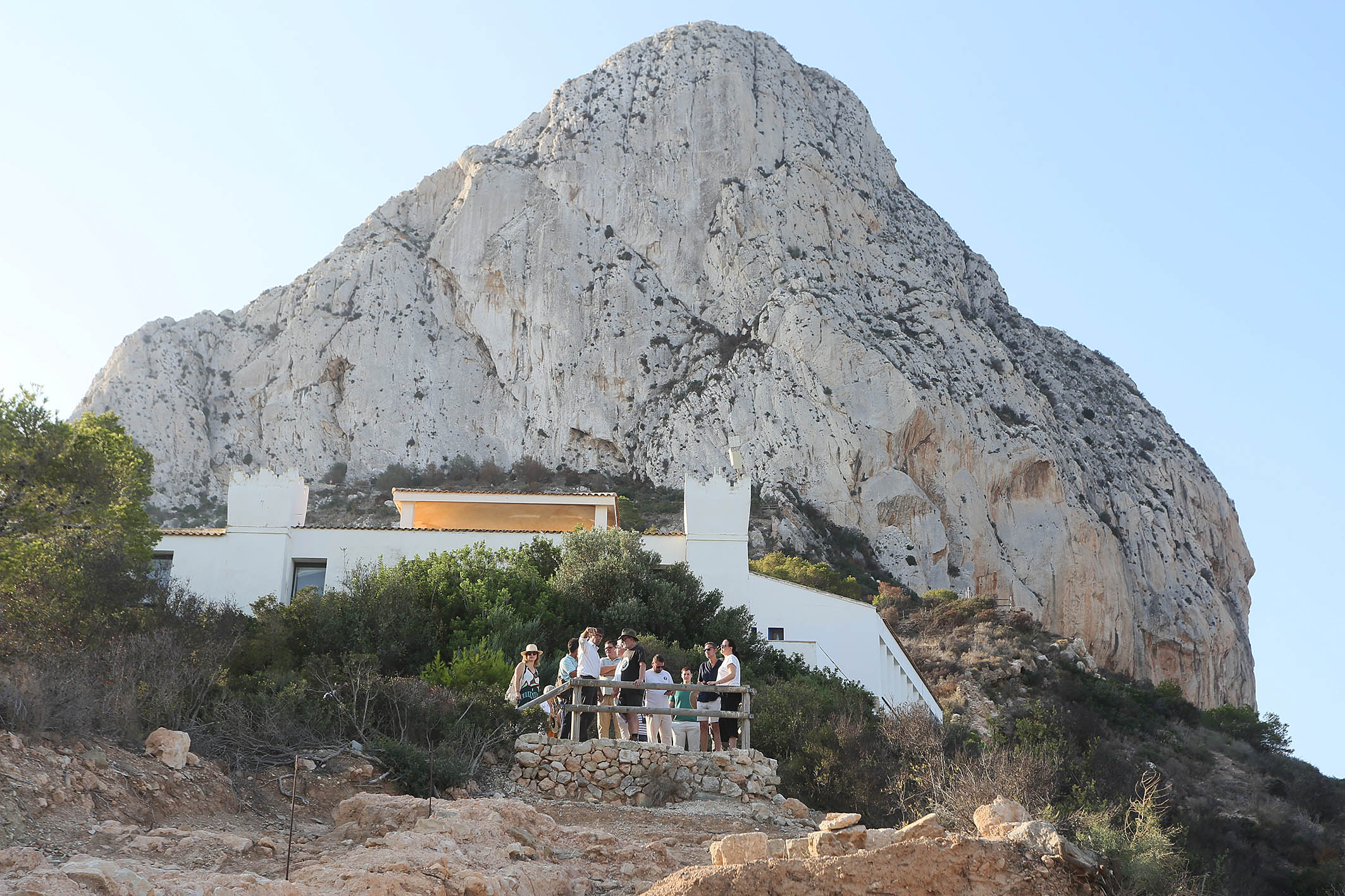
The work carried out in La Pobla d'Ifac this summer on the occasion of the the XIX Excavation Campaign of the MARQ have brought to light a early 14th century shed used for storage or to carry out different functions outside the medieval city walls.
The Deputy for Culture, Juan de Dios Navarrovisited this morning the archaeological site, located on the slopes of the Peñón de Ifach Natural Park, to learn first-hand about the details of this five-week campaign. He was accompanied by Calpe's councillor for the Environment, Juan Manuel del Pinoand by the director of MARQ and coordinator of the Campaign, Manuel OlcinaThe provincial head toured the enclave where a team of professionals has been working for the last four weeks under the leadership of José Luis Menéndezspecialist in medieval archaeology and exhibition technician at the Alicante museum.
"For the Provincial Council it is a great satisfaction to support this campaign to recover and promote part of the rich cultural heritage that we treasure in the province, in this case through a project in which more than one million euros has already been invested over nearly two decades of collaboration with the Calpino town council," said the deputy. For his part, del Pino thanked the efforts made by the provincial institution through the MARQ, whose team is already working on the project. site master plan.
Framed in the Plan for archaeological excavations and investigations The MARQ, whose overall budget amounts to 114,000 euros, the actions carried out in Calp have received this year 23,000 euros. The work focused on the vicinity of the West Gate, a secondary access to the interior of the city, and determined that Building XIV - discovered in previous campaigns - was a shed used for storage or different functions outside the city walls.
As Olcina explained, "the shed is more than thirteen metres long, open on both sides and covered with a wooden and tiled roof". It was built at the beginning of the 14th century and in the middle of the century the building was abandoned in order to build a covered gateway to secure the passage to the West Gate.
The archaeological work has also focused on documenting the first phase of occupation of this space, as well as the interior of the city, once the threshold of the Western Gate was crossed. The MARQ continues to investigate this important enclave, which has become one of the most important archaeological sites in the city. reference in Valencian medieval archaeology.
The MARQ has recently been awarded by the Calp Town Hall with the Premi 9 d'October for his scientific contributions and for working on the conservation of the Pobla d'Ifac and the Roman vicus of Baños de la Reina.
